As the Colorado economy has grown and housing prices have skyrocketed, we have been witness to a highly visible rise in homelessness. It would be a mistake, however, to think this is a new problem. In fact, Denver’s lack of housing and substandard housing goes back to the time of Westward Expansion. As soon as the Gold Rush hit, land speculators arrived, and those without means would often continue on in their meager subsistence. According to local historian Phil Goodstein, the 1870s saw a boom in poverty and insufficient housing to match the boom in industrialization.
“Shortly after the railroad arrived in Denver in 1870, tracks started to cut through the area close to the Platte River...The area between the depot and the river increasingly filled with warehouses and factories. Simple residences were scattered among them...Shanties popped up leading city hall to dismiss the section as a slum. Floods sporadically washed away homes and businesses.”
This area, long referred to as “the Bottoms” became a haven for newly arrived immigrants, particularly from the early Italian community, who would set up small farms and even cultivate water chestnuts. It would be an understatement to refer to many of these communities as hard-scrabble. Often, whole families suffered brutal winters in poorly-constructed, unheated shacks, as they had little to no money for coal or other fuels. In 1874, the city physician, Dr. Bancroft, and a group of local women began work on a city hospital for those simultaneously experiencing homelessness and illness. This would augment the county hospital that already provided for those who were indigent. Such places were often referred to as “poor houses,” not to be confused with the poor farm, which is a story for another time.
Throughout the 1880s and 1890s (though certainly not exclusive to that period), Denver’s priorities had more to do with the removal of squatters from land the city wished to utilize than the endemic issue of poverty and housing stock. During the coldest part of 1897, the city was ready to construct the 14th Street viaduct, and so they ordered the destruction of numerous shanty towns with names like “Paradise Alley,” Edgewater,” and “Riverside Park.” One intrepid reporter from the Rocky Mountain News decided to highlight the living conditions of the residents, focusing on a family of five named Brittenheimer. What follows is the newspaper’s description of the Brittenheimer home from January 3, 1897:
“The building of this abode certainly did not consume over a day or two. A vigorous wielding of a pair of shovels soon gouged into the embankment a crevice about two feet in breadth at the opening and about ten feet in diameter inside. The roof is old mother earth, strengthened by a few rotten boards. The house comprises one room, which is intended to be circular in shape and is about ten feet across. Several thicknesses of gunny sacks do for a doorway and a hole, through which is thrust a rusty piece of stovepipe, stolen from some dump pile, carries the smoke out of the cave.”
The reporter went on to describe in vivid detail makeshift furniture, the struggle to scavenge bits of coal from the railroads, and the common occurrence of exposure-induced death in such communities. Some of these communities, such as Petertown, would endure for decades, but often residents experienced an endless cycle of displacement.
By the early 1910s, facilities such as the poor farm and county hospital were expanded. Civic and religious organizations worked to fund group homes for orphans and children who were homeless. The Colored Orphanage and Old Folks’ Home at 873 Zuni Street even offered to take in children from poor families in exchange for “a very small pittance.” One crusading Denverite, Edwin A. Brown, toured the country dressed as a homeless man and wrote a book documenting the mistreatment he received in cities across the country. He advocated for municipal emergency homes to house the unhoused and won the backing of trade associations in cities like Denver, but no radical reforms ever came.
Even before the Depression hit Denver, the city continued to be plagued by the many hardships brought by unchecked poverty. Once the Depression set in, things only continued to intensify, in part due to municipal policies. Some people took to living in holes in the ground in shantytowns like Gopher City. While some of those most in need began to see income from federal programs like the Works Progress Administration, in 1938 the city embarked on a project of tearing down family shanties deemed unsafe, with no real plan for replacement housing. In the words of Mrs. E. B. Stallsworth whose family lived in a five-room shack at 13 Sand Street,
“If they tear our house down, we’ll have to pay rent. I don't see how we can pay rent and buy food for a family of seven on what my husband makes on the WPA.” Rocky Mountain News March 24, 1938.
This shanty razing program was spearheaded by chief building inspector, Wendell T. Hedgecock. His comments in the March 22, 1938, Rocky Mountain News suggest there was also a racial component to his policies. He claimed the program would “prevent their again swarming into Denver next fall after the sugar beet harvest.” Even in the 19th century, it was common for seasonal farm workers to spend winters along the Bottoms in Denver and, particularly, in immigrant communities like Globeville.
While these migrant workers were primarily German and Russian at the beginning of the 20th century, by the time the Depression came, Latinos had become the most prevalent demographic in the beet fields. The local welfare bureau went so far as to claim that these seasonal workers were not true city residents; thus, by destroying their winter quarters, local charity funds wouldn't be wasted on the undeserving. From the same article:
“Social service workers are generally of the opinion that the destruction of these shelters will drive out hundreds of families from Denver. It will mean a more equitable distribution of relief money to those remaining on the rolls.”
It wasn't all bad news, however. In October 1938, the Denver Housing Authority under the leadership of James Q. Newton, father of the future mayor of the same name, announced plans to use some of the slum clearance money to construct affordable housing. Rents would be reduced or fully subsidized and playgrounds would accompany developments. While well-meaning, it was not enough to alleviate the city’s problem. A 1941 survey showed that infant mortality in the poorest parts of the city were more than double the city’s average. Most of these deaths were attributed to respiratory disease, diarrhea, and enteritis.
By the close of the 1940s, the city was temporarily shocked by the death of 18-month-old Roberta Van Meter, who died when her family’s shack went up in flames. Longtime Denver Post columnist, Lee Casey (Denver Post November 4, 1949) denounced how the war had been used as an excuse to delay construction of new homes for the poor while, after the war, again nothing was done because people claimed material and labor costs were too high.
While the 1950s are often considered a high point of American prosperity, the rising tide did not lift all boats. Blighted communities were such an issue in 1950 that the Denver Post published a long series of articles on the subject. The areas considered blighted continued to be clustered along the Platte River and two-thirds of the homes were considered unfit to live in. Because of redlining and other discriminatory loan practices, 81% of the homes were owned by landlords. This only contributed to further neglect and lack of reinvestment in the properties and communities. Landlords were making millions on substandard properties that had already outlived their life expectancies.
Progressive Denver Mayor Quigg Newton attempted to focus on the problem by coordinating aid from the public housing authority, the urban redevelopment program, and the city building department. The city had also set up its own housing agency that was working to find affordable housing for the poor as well as the many people displaced by the Valley Highway Program, which built Interstate 25 through Denver. The agency worked to keep track of housing vacancies to place those who could afford rent and to help those who couldn't access public housing. At the time, 300 city blocks along the east bank of the Platte were considered blighted and at least 5,000 homes did not meet basic building codes.
By 1954, the mayor’s office announced an extensive plan based on a 3-year study of the issue. It included better building codes, better maintenance of existing structures, and more extensive coordination between city departments. In 1955, however, the city council passed a new, tough housing code meant to eliminate slums with little regard for housing needs. As the 1950s came to a close, the city claimed that over 11,000 dwellings had been brought into compliance and approximately 1,300 had simply been demolished.
In part two, we will continue to explore the cycle of poverty and lack of adequate housing through the end of the 20th century. In the meantime, if you want to learn more about how these issues impact people today and/or want to get involved, see the following links:
Colorado Coalition for the Homeless has an educational series.
Interfaith Alliance offers the opportunity for people to sign up for information on legislative action.
Denver's Office of Housing Stability serves as advocates.
Metro Denver Homeless Initiative offers the opportunity to join councils and committees to work on the issue.

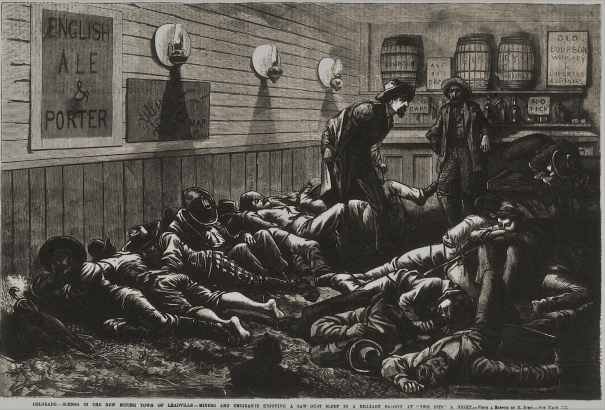
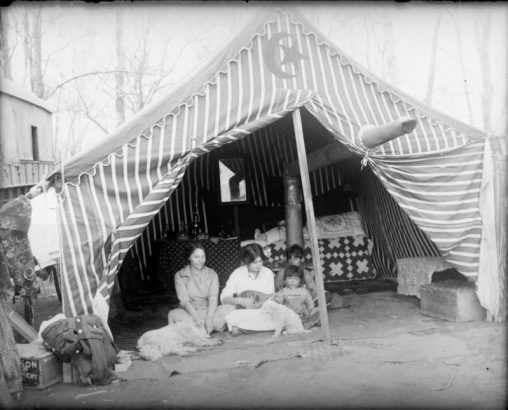
![A barefoot girl prepares to open the front door of the Sunshine Rescue Mission at 1822 Larimer Street in Denver, Colorado. The sign in the windows shows a sun with sunbeams that reads: "[Sunshin]e Rescue Mission" and "If [?] Love Shall Conquer Theft." The sign on the door reads: "Hope for all w[?]. Sunshine Rescue Miss[ion]. Service 12 O'clock Noon and [?]. Jim Goodh[eart], Superintende[nt]."](/sites/history/files/styles/blog_image/public/cdm_65826_1.jpg?itok=KmoanO3E)
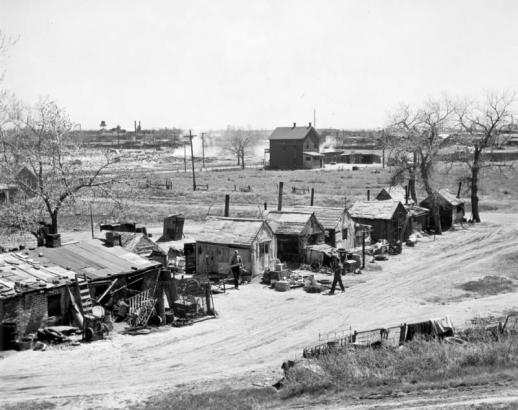
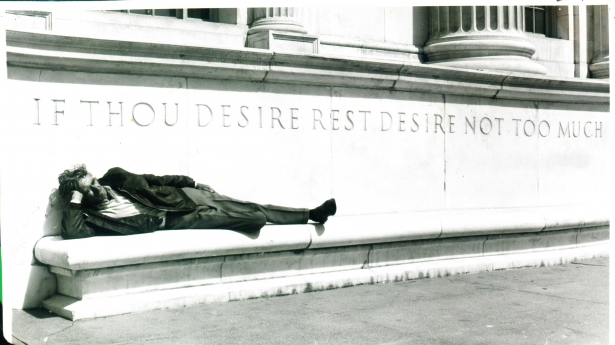
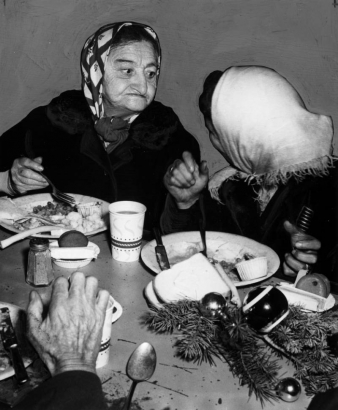

Comments
Bravo! This is very
Bravo! This is very interesting and all too true of many cities. Is the entire piece available separately, or will it be at some time?
Thank you so much. It
Thank you so much. It certainly appears to be part of an endless cycle. The second piece will be available next Tuesday.
This is great article, thank
This is great article, thank you for the knowledge this brings. I look forward to the next article. It saddens my heart that we have not found a way for all to live in decency and without prejudice.
Thanks so much for your kind
Thanks so much for your kind words and your compassion. Part two is now available. https://history.denverlibrary.org/news/homeless-denver-part-2
Add new comment